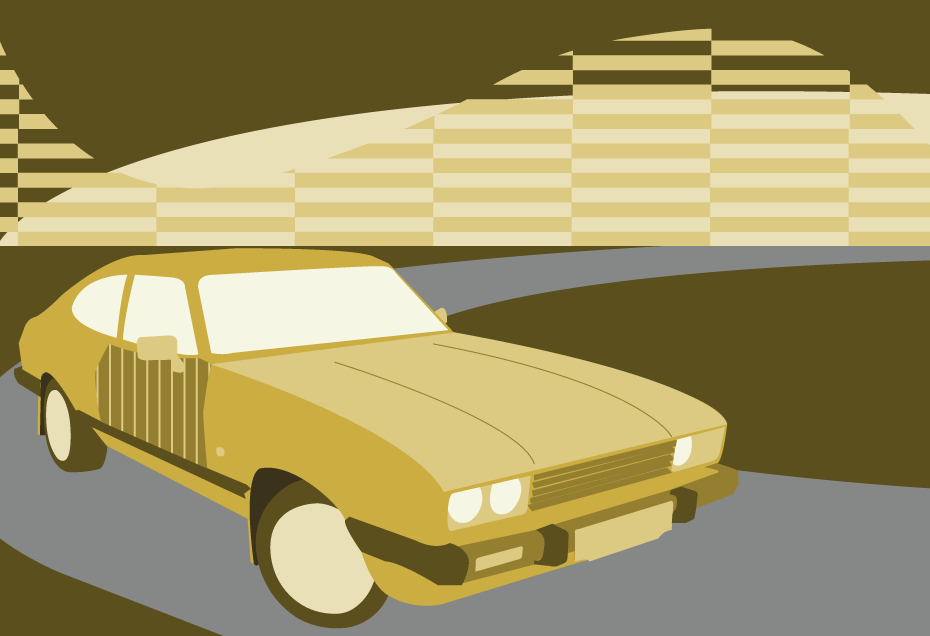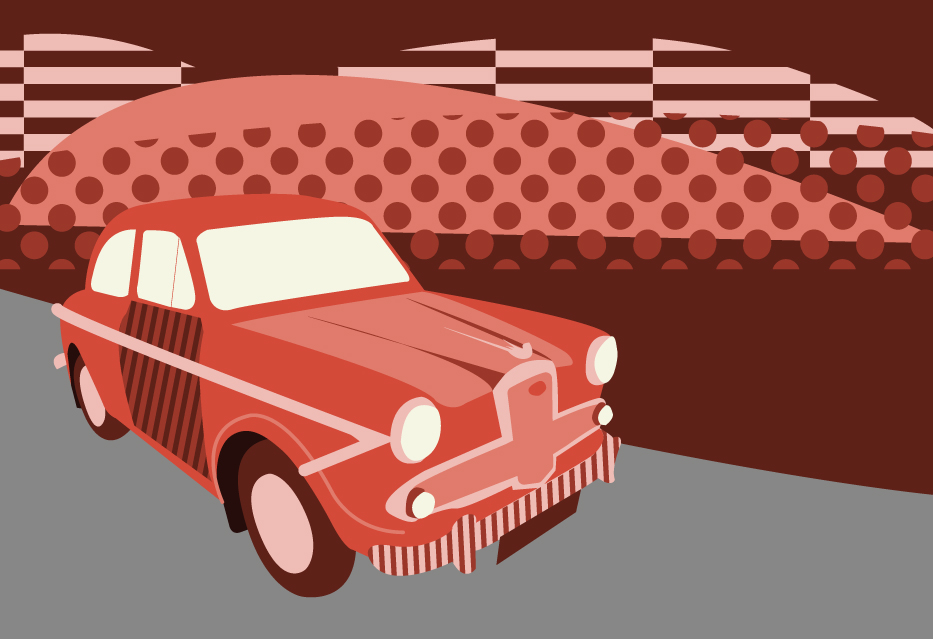The Ford Capri – all 1,886,647 of them – owes its existence to the phenomenal success of its American cousin, the mighty Mustang.
When the Mustang was launched across the pond in 1964, Ford bosses only expected to sell 100,000 cars in the first year.
But with favourable reviews in no fewer than 2,600 newspapers the morning after launch, that target was surpassed within three months, and more than a million Mustangs were sold in the model’s first 18 months.
Attention quickly turned to Europe – could Ford replicate this success? We look at the ups and downs of the Ford Capri.
The Capri name had already been used on a Ford in the UK market, for the American-styled Consul Capri Classic of 1961-64. And a handsome beast it was too, with a front end aping the legendary mark one Chevrolet Corvette.
And had Mitsubushi not already trademarked the name Colt, that’s where the Capri moniker may well have ended.
Codenamed Project Colt all the way through development, Ford was eager to make the connection with the Mustang (a breed of wild horse in the western states), but was scuppered by the Japanese company’s lawyers.
So Capri it was and, when the first design mock-ups were shown to audiences in major European cities in 1966, a budget of £20million was agreed to make the UK’s first genuine “pony car” a reality.
And the car that appeared at the Brussels Motor Show in January 1969 fulfilled the brief so brilliantly that 400,000 of the four-seater coupes had been sold by the end of the following year.
Featuring a long bonnet, sloping rear end and contoured wings and doors, the Capri stole a march on its competitors and won the hearts of a nation wanting style to go with reliable, familiar mechanics and the trusted Ford name.
Built at Dagenham and Halewood in the UK, and across Europe, the car appealed to a broad spectrum of buyers thanks to Ford’s decision to make the car available with a variety of engines and trim levels – there was a British Mustang for every budget.
Based on Cortina running gear, the entry-level 1.3l and the intermediate 1.6l models used the Ford Kent engine, while the Essex V4 provided the power for the range-topping 2.0l model, before Ford upped the ante in September 1969 by fitting the 3-litre Essex V6, providing 136bhp and an impressive top speed of 120mph.
In October 1969, Autocar wrote of the 3000GT XLR: “Installed in a car weighing only a little over a ton, this all promises exciting performance.
“From as low a speed as 15 mph in top gear the acceleration is impressive. The long nose, complete with power bulge, lifts a little as the car pulls away with a strong steady push. At its price as a high performance GT it represents good value for money.”
With a 0-60 time of around 10 seconds, the performance Capri was born, and so began a love affair between young executives and “the car you always promised yourself”, as the advertising men declared with confidence.
The 3000E arrived in March 1970, with improved trim levels, and track success for the car followed in 1971, when Germany’s Dieter Glemser won the European Touring Car Championship in an RS2600 using a Cologne V6 engine.
A number of specials were created before the mark one received a facelift in 1972, including the Vista Orange Special, which had such luxuries as a push button radio, fabric seats, a vinyl roof and a heated rear screen.
The revised model featured better suspension, larger rear lights, and better seats – and the Capri marched on, with the 1,000,000th car rolling off production lines in August 1973.
The ultimate mark one was the RS3100, but getting hold of one now may prove tricky – and expensive – as only 14 of the 250 built for homologation purposes are believed to have survived.
Like our illustration of the Ford Capri at the beginning of the article?
Download a free high-quality poster version here.
Perhaps not surprisingly in the midst of an oil crisis, Ford found their fastest production car at the time a tough sell, registering 23 for their area sales managers to drive to help shift them with a big discount and low miles.
These days, you’ll pay around £35,000 for a top notch RS3100, but for that you get a gorgeous, curvy and very rare head-turner that can hit 60mph in just over 7 seconds.
That was to prove the last hurrah for the mark one, however, with the more civilised, possibly oil crisis-influenced mark two introduced in March 1974, with a shorter bonnet, commodious hatchback and fewer curves.
There’s no doubt it was less sexy than its predecessor, but technological developments ensured it was smoother to drive, more comfortable with an improved interior, and very reliable. The Capri had matured, but had lost a little of its sparkle along the way. Indeed, the 1.3L could be described as an economical, practical family hatchback – though something of a sheep in a fairly benevolent wolf’s clothing.
Sales declined – either as a result of the oil crisis pushing motorists towards smaller hatchbacks or because of the styling changes (no-one knows) – but the 3000S was still a seriously sporting motor and, along with the black or white John Player Special limited edition featuring gold pin stripes to mimic the F1 cars bearing the sponsor’s name, are the pick of the bunch.
The reshaped bonnet and now familiar quad headlamps on the mark three, introduced in 1978, gave the Capri a meaner look and helped recapture some of the lustre lost with the “soft” mark two.
Sawtooth rear lights and a spoiler made a subtle but meaningful difference to the rear, and the Capri remained a popular choice in the late 1970s for those looking for performance, reliability and renewed style.
By now, the Capri came in myriad forms, with the 1.3L still providing an underpowered entry level model, right up to the 3-litre S and Ghia models, which still packed a genuine performance punch.
The popularity and image of the cars was given a boost when silver and gold 3.0S models were driven by Bodie and Doyle in the hugely popular TV series The Professionals.
But better was to come, with the introduction of the 2.8 Injection models, which replaced the 3-litres in 1981.
Power was boosted to 160bhp, producing a top speed of 130mph and a 0-60 time of 7.7 seconds, making the Dagenham flyer a better proposition, pound for power, than its German and Italian rivals.
But within a year or two, the Capri was beginning to look long in the tooth and customers were looking towards hot hatches – the Golf GTi and Ford’s own XR3i – for their practical performance kicks.
The Capri limped on until 1986 as a raft of special editions and marketing exercises kept the car alive, though it was sold only in Britain from 1984 onwards.
Adrian Flux Classic Car Insurance
Turbo versions were produced in German RS, Tickford Turbo and Turbo Technics guises, each pumping out about 200bhp and hitting 60mph in under 7 seconds, with the Capri Laser and Capri 280 the last of a line stretching back nearly 20 years and almost 2,000,000 cars.
Once out of production, second hand Capris fell into the hands of boy racers and modifiers, perhaps unsurprisingly as the rakish, laddish looks and good performance were perfect for testosterone-fuelled young motorists.
Furry dice, furry seats, exotic paintwork and after-market wheels all left the Capri with an image problem through the late 80s and 1990s, not helped by Del Boy’s green “pratmobile” Capri Ghia featured in Only Fools and Horses, complete with tiger fur interior, multiple fog lamps and bright pink aerial.
But, now the cars are classics and the boy racer phase has passed, values have dramatically increased, with the best 2.8 Injection models fetching up to £15,000.
Early cars can be picked up for under £5,000 for a restoration project, and there are plenty of standard four-cylinder mark twos around for between £2,000 and £5,000, depending on condition.
Or you could buy a Ford Probe, the Capri’s unloved successor, for as little as £500…
Get competitive classic car insurance for your classic Ford with Adrian Flux.
















